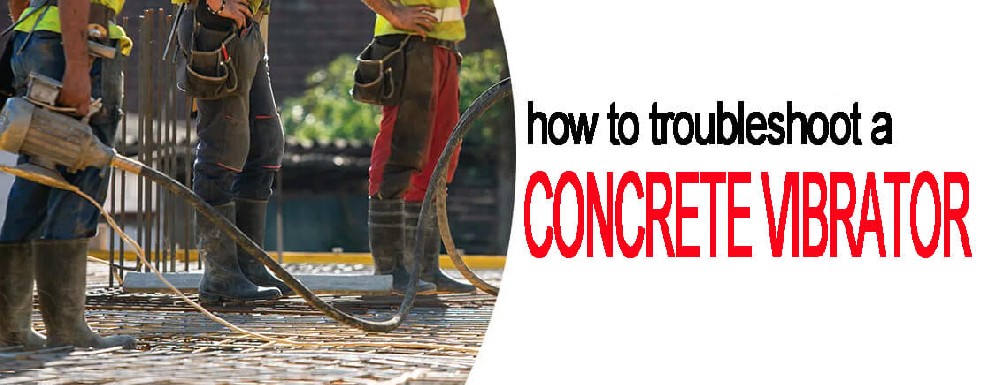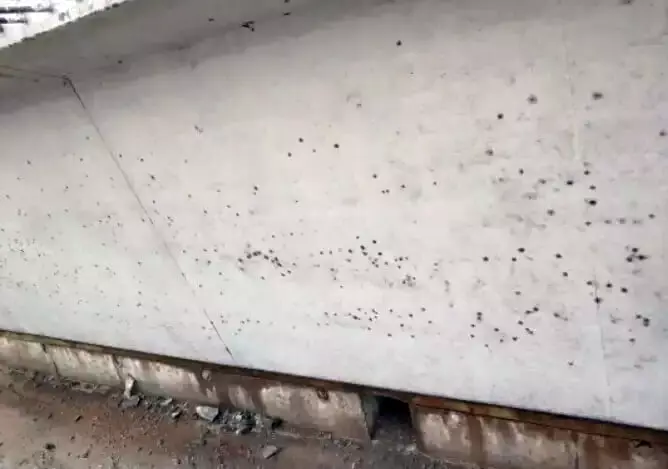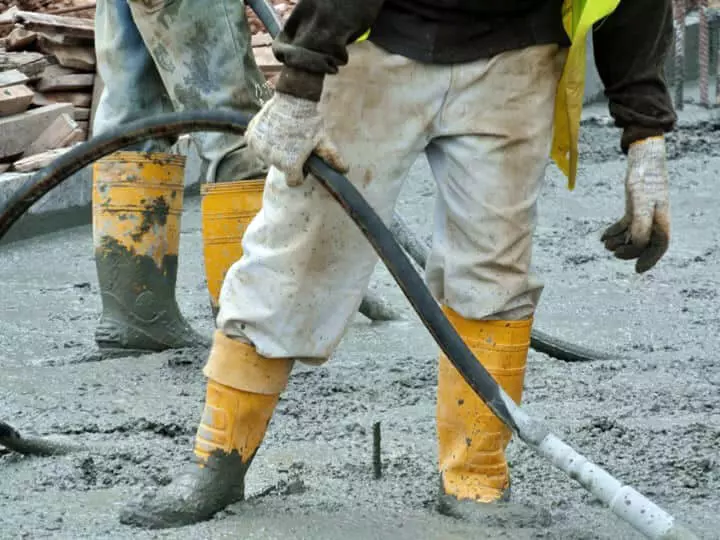31Jan 2024
table of contents

Concrete vibrators are important construction tools, to ensure structural accuracy, maintain structural stability. They help poured concrete settle smoothly into cracks, voids, preventing air pockets or bubbles from forming.
Even though a concrete vibrator is capable of sustaining regular vibrations over long-term construction periods, it isn't exempt from occasional glitch. A faulty concrete vibrator not only poses an inconvenience but also a potential safety risk. Moreover, it can trigger costly project delays owing to incorrect settling of concrete.

Luckily, with the skill to troubleshoot a concrete vibrator, one can conserve significant time, minimize risks and evade expensive repairs. This article aims to equip readers with the necessary understanding to resolve frequent troubleshoots with concrete vibrators, to guarantee project moves forward without unnecessary disruption!
Concrete vibrator failure can often be traced to one of two core areas: engine/motor starting issues or operational issues where the engine runs but fails to produce vibration. Let’s dig into these two issues and look for possible solutions.
The first type of problem you may encounter involves the engine or motor not starting. In this case, you may want to check a few factors:
Fuel/Power: This is a basic but crucial first step. For vibrators that run on gasoline, ensure that the tank has an ample supply of fuel that is fresh and free of contamination. When it comes to electric or battery-operated concrete vibrators, we must verify that machine is accurately linked to the power supply, or ensure that the battery possesses full charge.
Spark Plugs and Ignition System: The state of spark plugs and ignition system can often be the root of problems. It is imperative to ensure that spark plug is free from filth, is gapped accurately, and shows no signs of wear and tear. If spark plugs are in a favorable condition while problem endures, it may be necessary to examine entire ignition system.
Starter or Battery Problem: If you check the fuel and spark plugs but the motor won't start, consider the possibility that there's a problem with the starter or battery (for electric vibrators). Check the connections, charge levels and general condition of these components.
Overheating or Oil Level Issues: Sometimes the engine or motor will refuse to start due to overheating or improper oil level. Before attempting to start, make sure the engine is cool and carefully check the oil level, topping up if necessary.
Once the engine or motor is running, there may be situations where the necessary vibration cannot be generated:
Clutch or belt engagement issues: Clutches and belts play an important role in transmitting power from the motor to the vibrating head. Check these mechanisms for signs of wear, separation or slipping.
Shaft or head coupling issues: Make sure the flexible shaft is properly connected to the power unit and vibrator head. Any slippage or disconnection will prevent vibration from being effectively transferred from the motor to the application area.
Excessive engine vibration: If the engine or motor itself is vibrating excessively, it may indicate an internal problem. These can include imbalances in rotating parts, damaged bearings, or even cylinder wear. In this case, professional inspection and repair may be the best solution.

Even if your engine is running smoothly, you may still face challenges from the vibrating head of your concrete vibrator. These problems can usually manifest themselves in two ways: weak vibration or excessive vibration. Let’s delve deeper into these issues and suggest some troubleshooting steps for each issue.
Weak or suboptimal vibration from a concrete vibrator can slow down your project and affect the quality of concrete consolidation. Here are some potential causes and their solutions:
Worn head bearings or seals: As with any component that experiences significant wear, the bearings and seals in the vibrating head can become worn, causing weak vibrations. Check bearings and seals for signs of wear. If necessary, replace these parts to restore full functionality of the vibrator.
Shaft bending or impeller damage: Since these are key components that generate vibration, shaft bending or impeller damage will directly lead to a significant decrease in vibrator efficiency. Check these parts carefully and replace if deformed or damaged.
Clogged heads or hoses: Sometimes, clogged heads or hoses can reduce vibration intensity. Regular inspection and cleaning of the head and hose will help maintain optimal performance.
Conversely, vibrators that produce excessive vibration can also cause problems, including accelerated parts wear and potential risks to operator safety. Some potential causes include:
Shaft or impeller imbalance: Indeed, any disproportion in rotating elements, for instance, a shaft or impeller, can trigger excessive swaying or vibration. This may require calibration or replacement of these parts.
Head or coupling misalignment: Misalignment of the vibrator head or coupling can also cause excessive vibration. Inspect for appropriate tightness and correct alignment, making adjusts as required.
Worn bushings or mounts: Worn bushings or mounts can also be the cause of increased vibration. If worn, these components may need to be replaced to ensure normal vibration levels.
Effectively troubleshooting concrete vibrator head problems requires the ability to accurately identify the problem. Understanding these common problems will help you diagnose and repair any faults so that your concrete vibrator has the longest life and optimal performance.

In addition to issues related to starting the engine and vibrating head, there are other problems you may encounter when using a concrete vibrator. Some common faults include oil or fuel leaks, sparks or short circuits, and excessive noise or smoke. Let's discuss these failures and their potential solutions.
Oil or fuel leaks not only result in a mess, but they may also lead to equipment malfunction and pose a significant fire risk. If you notice a pool of oil or fuel beneath your vibrator, or catch a heavy scent of smoke, consider implementing the following troubleshooting steps:
Check seals and gaskets: Leaks usually come from worn seals or gaskets. Check the engine, fuel tank, and seals and gaskets around the tank, as they may be the culprit. If problems are found, the components must be replaced in time.
Check the fuel or oil lines: Periodically inspect the fuel or oil lines and their respective connections. Loose connections or damaged hoses may be the cause of the leak. If necessary, tighten connectors or replace any damaged wiring.
Sparks or short circuits are especially dangerous with equipment such as concrete vibrators. To understand the source of electrical problems, consider:
Check the wiring: Damaged wires or loose connections often cause sparks or short circuits. Check the vibrator wiring regularly and make sure all connections are tight. Replace any frayed or frayed wires immediately.
Check the power supply: Absolutely, it's crucial to ensure that power supply you are using is compatible with voltage requirements of your concrete vibrator. An inappropriate power supply can lead to electrical malfunction.
While machinery may produce some noise or smoke, excessive noise or smoke should prompt investigation:
Listen for unusual noises: High levels of noise might be an indicator of impending failure of internal component of the engine. If noises such as metallic thudding, squeaking, or rattling sounds, it may warrant a thorough inspection of internal parts of engine for potential wear or damage.
Look for excessive smoke: Excessive smoke may indicate gasoline engine combustion process problem, or heat dissipation in the electric motor problem. These problems can be caused by incorrect fuel-to-air ratio, insufficient ventilation, or problems with cooling system.
By understanding and addressing these issues promptly, you can prevent major damage to your concrete vibrator and ensure your project runs smoothly without unnecessary obstacles. Keep in mind that while you can complete simple troubleshooting yourself, resolving serious or complex malfunctions may require the attention of a professional to ensure safety and extend the life of your tool.

Now that you are familiar with the above troubleshooting steps, we would like to introduce you to BISON’s line of premium concrete vibrators. We stand by our commitment to delivering reliable, robust concrete vibrators, and a partner worthy of your trust. BISON concrete vibrators are carefully developed and rigorously tested to ensure they operate at peak efficiency, and are constructed robustly to endure the challenging conditions found at construction sites.
Are you having problems with your current concrete vibrator, or are you looking for a new supplier? Choose our BISON concrete vibrators for durability and efficiency, and let's work together to make every construction project a masterpiece of strength and durability!
inquiry form here
BISON BLOG, All the latest news and views from Bison Machinery.